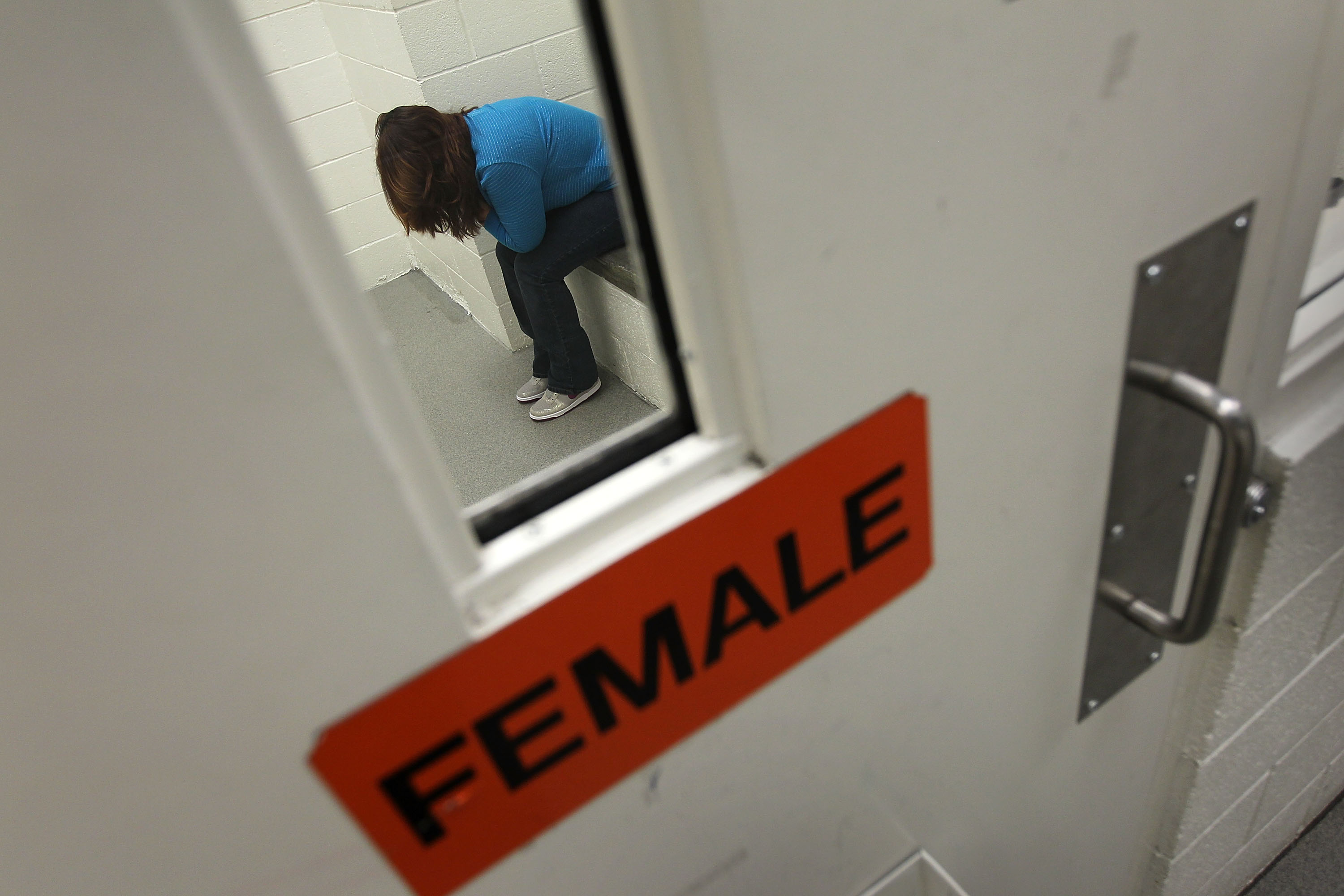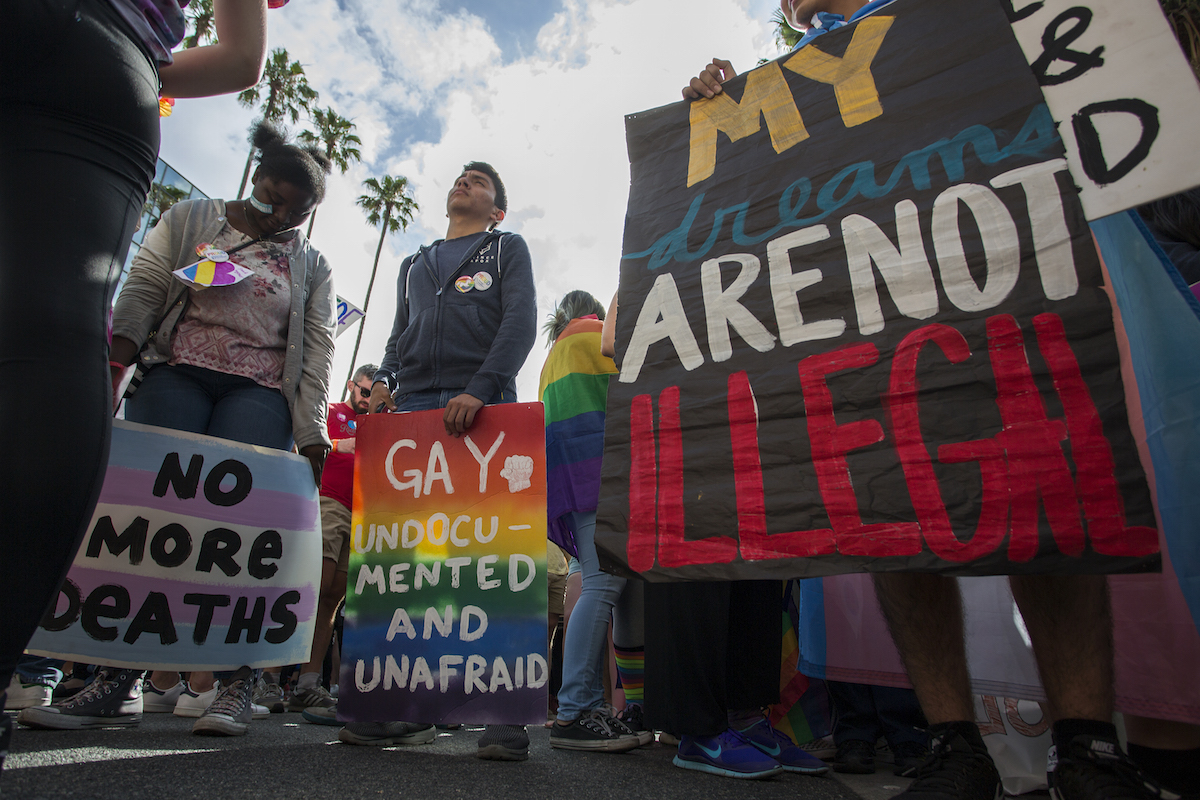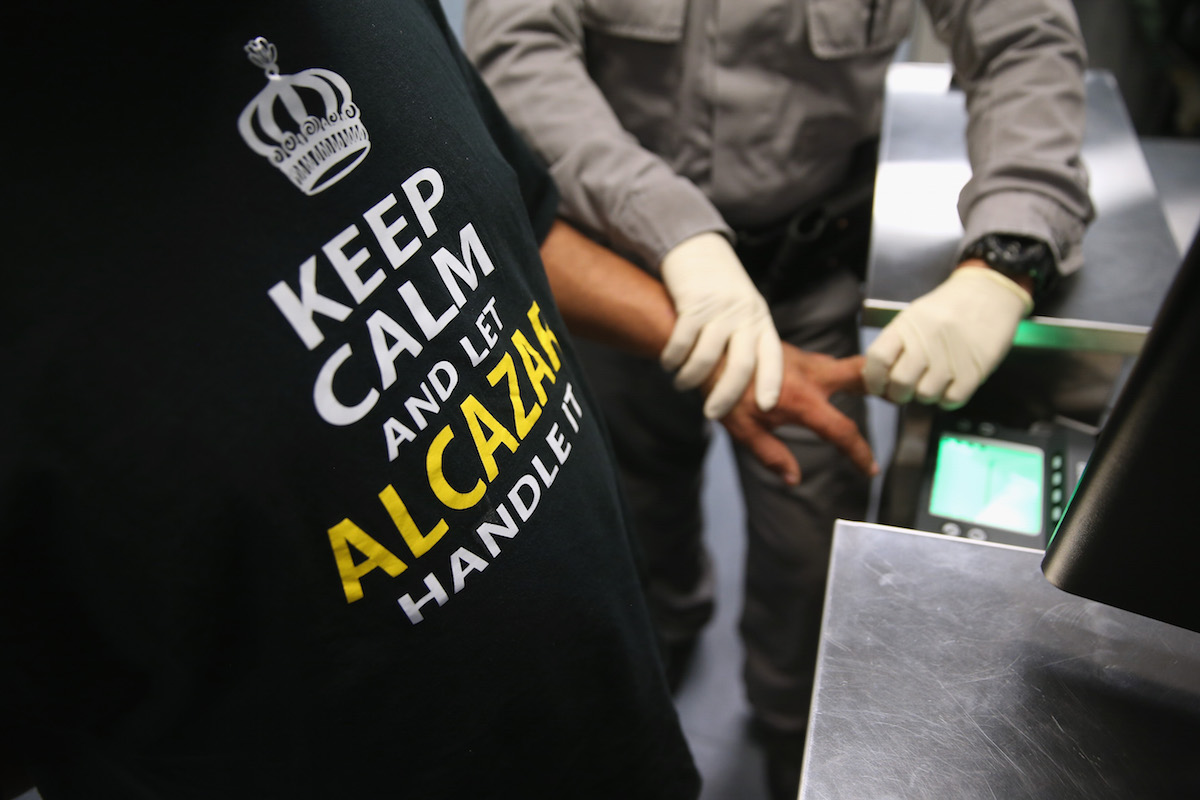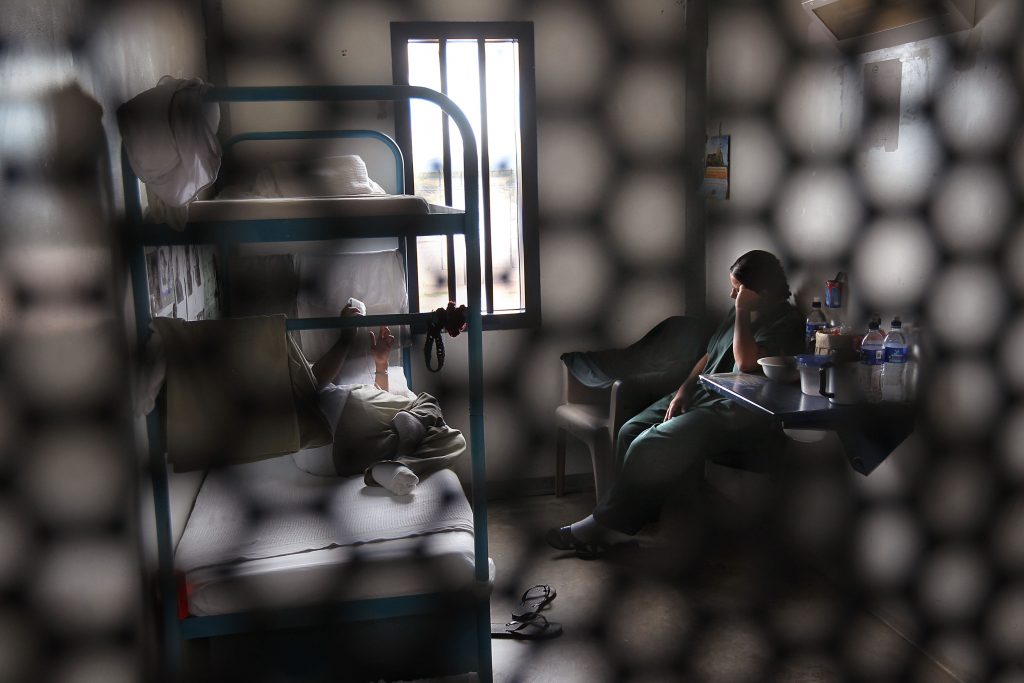Coming out as a transgender person takes courage and strength virtually anywhere in the world. In Latin America, embracing one’s identity as a gender other than what was assigned at birth can mean humiliation, threats, assault, or even death. Seeing no way out of their hostile living or work environments, this segment of the population sometimes flees to the United States, only to find themselves in a similar situation or worse.
For one woman from Guatemala and one from Mexico, acquiring asylum in the US came with several hurdles, including detention in an immigration center. No statistics on the success rate of asylum granted to immigrants who identify as trans exist, but those who have experienced it firsthand – as well as their advocates and lawyers – believe it’s low.
For the Guatemalan woman, who is publicly referred to as S.A.C., and Karolina López, who now works for a queer immigrant advocacy group in Tucson, Arizona, the evidence was too great for judges to ignore. Immigration courts granted both asylum, with S.A.C. receiving this status in October 2017 and López in 2015.
Editor’s note: This piece contains depictions of rape and violence.
S.A.C.’s journey to the United States
S.A.C. knew of the anti-discrimination laws for LGBT individuals in the United States, but felt she could find safety away from corrupt Guatemalan police and drug cartels who targeted her for her gender identity.
“I wanted to change my body and marry someday,” she tells me in an email interview facilitated by her lawyers.
A Guatemalan drug cartel beat and threatened S.A.C. with death when she refused to collect extortion money, according to her legal team at the Southern Poverty Law Center’s new Southeast Immigrant Freedom Initiative (SIFI) – which provides pro bono representation to detained immigrants in southeastern states. In a SPLC press release, the organization said Guatemalan police raped and tortured her, and coworkers sent her death threats because of her gender identity.

She fled Guatemala in October 2016 and turned herself in to US Border Patrol agents upon crossing the border in early December. Officials placed her at the Stewart Detention Center – an immigration center for men in Lumpkin, Georgia, which advocates say has a reputation of treating detainees poorly.
Living under these harsh conditions came after a lifetime of enduring humiliation and bigotry in Guatemala. Drawn to activities traditionally assigned to girls, S.A.C. faced bullying at only 7 years old. Attempting to escape the routine degradation, S.A.C. dropped out of sixth grade to work in farming.
In her late teens, she relocated from her rural Guatemalan village to Guatemala City to work in a laboratory. Her new lease on life didn’t last long, as discrimination pushed her out of work. “I started to work on the streets as a sex worker dressed as a woman so that I could pay rent,” S.A.C. says.
“I was sent to solitary because they said I was crazy.”
Sicarios in Guatemala became aggressively violent toward transgender women forcing them to sell drugs and sex on the streets. This eventually pushed her to migrate to the US.
While at Stewart Detention Center, she once again withstood intolerance and prejudice “I told (one of the managers) my preferred female name, and she told me that I am not a woman,” S.A.C. explains. “I was sent to solitary because they said I was crazy.”
A psychologist determined she was mentally fit and sent her back to the general population at the detention center within a day. She began focusing on her asylum case.
“I felt secure with my attorney that my case was realistic because it is the reality of the life that I had lived,” S.A.C. says. “I continued with the process because I had to get out of my country. Otherwise I would be killed.”
About Stewart Detention Center
SIFI has the largest deportation-defense program in the country, with offices at Stewart, at Irwin County Detention Center in Ocilla, Georgia, and at LaSalle ICE Processing Center in Jena, Louisiana. Brian Hoffman, an immigration and human rights attorney, serves as lead attorney at the Stewart office.
Lumpkin immigration court has a history of granting few asylum cases, with most taking six to eight months, according to Hoffman. S.A.C. remained at Stewart for nine months before gaining asylum.
A SPLC press release explains that between 2007 and 2012, only six percent of detainees at Stewart had legal representation – a number far below the 37 percent representation rate of all immigrants in removal proceedings nationwide.
“This lack of representation contributes to a 7 percent grant rate to asylum applications, contrasted with a 43-percent grant rate nationwide,” the press release reads.
According to 2016 data compiled by Syracuse University that compares asylum decisions in immigration courts, Lumpkin’s success to denial rate for asylum was 3.7 percent to 96.3 percent for Judge Saundra H. Arrington, and 4.2 percent to 95.8 percent for Judge Dan Trimble.
Trans immigrants are at a disadvantage in courts
Representation from lawyers and backup from expert witnesses strengthened S.A.C’s case, Hoffman says. If a detainee is able to afford a lawyer, he or she may not be able to pay for a psychologist or professor who can speak with credibility on the matter.
Trans people, especially those coming in from other countries, tend to use the term “gay” as a blanket identification, which can also have consequences in a courtroom. “You don’t realize they’re trans until further along in the case,” Hoffman tells me. “In this case, some statements said she was a gay man, because she herself didn’t understand the importance of identifying as a woman.”
In the justice system, Hoffman explains, there is a legal distinction between gay and transgender and that can influence the outcome of a case.

Language barriers that require interpretation and translation skills can also exist. Hoffman, a certified translator, kept the communication flowing smoothly in S.A.C.’s case.
Though S.A.C.’s case was successful, Hoffman hesitates to call it a win for the LGBTQI population in general. It may have set a precedent for similar cases in the future had the case still won after the government appealed the court’s ruling. The government, however, didn’t appeal the judge’s decision.
“The whole asylum system is geared in favor of people who just happen to be good at articulating a narrative,” Hoffman says. Courtrooms respond to cases with character development. If a person fails to captivate with a story about how a specific threat endangered their life, then chances for asylum are slim.
Transgender people who don’t receive asylum either face deportation to their native countries or remain in detention. Detainees sometimes get to so discouraged with the legal process for seeking asylum that they willingly return home so they don’t have to spend more time in detention, Hoffman explains. Most of them come from Central American countries, but they also hail from other parts of the world, such as Nepal and Ghana.
“We need a national public defender system for immigration,” Hoffman says. “There is a famous case from Stewart where a man lost his asylum case and was murdered. I think that happens more frequently than we hear about.”
Beyond these extreme cases, trans people are especially vulnerable in detention centers, where they may not always have access to necessary medication, such as hormone treatment.
“People come here for protection and we can’t treat them with human decency,” Hoffman adds. “I always tell people to go to a detention center or an immigration court, so they can witness the system for themselves and see how badly we treat our fellow humans.”
How ICE responds to mistreatment allegations
US Immigration and Customs Enforcement (ICE) officials said its staff implemented a care protocol in 2015 for trans-identifying detainees. ICE’s Office of Enforcement and Removal Operations issued Further Guidance Regarding the Care of Transgender Detainees – commonly referred to as the Transgender Care Memorandum – in June 2015.
“This guidance was a result of a six-month agency working group that examined transgender-related issues with LGBTI subject matter experts,” says Jennifer D. Elzea, acting press secretary at the Office of Public Affairs for ICE, in an email.
The agency sought input from Enforcement and Removal Operations (ERO) field offices and transgender individuals when drawing up guidelines, Elzea elaborates. The group also visited various non-federal facilities across the country to observe best practices.
The memorandum calls for official recording of individuals who self-identify as trans, which helps ICE monitor cases and conditions under which detainees are being housed.
“ERO created a robust, interactive training video that covers LGBTI sensitivity and transgender detained care, and specific instructions on the provisions of Transgender Care Memorandum,” Elzea says.
She adds that ICE has developed tools to ensure an individual’s gender identity is acknowledged early in the process. Under the memorandum, each ERO field office director assigned a trained employee at the supervisory level to serve as LGBTI Field Liaison. A national ERO LGBTI coordinator serves as primary contact for ERO regarding care and treatment of LGBTI detainees.
ICE currently runs a transgender housing unit at Cibola County Correctional Center in New Mexico located 80 miles from Albuquerque.
“The dedicated housing unit can house up to 60 transgender women in a separate wing, containing several single and double rooms; common areas with televisions and microwaves; a library with computers; a medical/mental health consultation room; and access to outdoor recreation space,” Elzea says.
As of March 2017, ICE ceased to utilize the Santa Ana county jail in California, which offered specialized units for transgender detainees. Prairieland Detention Center in Texas, which was intended to serve as a dedicated transgender housing unit at one point, is open to other detainees due to an increased demand for detention bed space “and other factors.”

Elzea adds that all ICE detainees receive judicial hearings and access to immigration courts per the Department of Justice’s Executive Officer for Immigration Review. “ICE is committed to treating all those in our custody in a safe and humane manner, including lesbian, gay, bisexual and transgender individuals,” she says. “The agency has a zero-tolerance policy for any kind of abusive or inappropriate behavior in its facilities and takes any allegations of such mistreatment seriously.”
ICE’s Detention Reporting and Information Line has a toll-free service that allows detainees to report any abuse or concerns. They can remain anonymous if they wish, and Spanish operators are also available.
Elzea reiterates that the immigration detention system prioritizes the health, safety and welfare of all detainees, including queer individuals. According to Elzea, improvements – such as reducing transfers, improving access to counsel and visitation, promoting recreation, improving conditions of confinement, ensuring “quality” medical and mental health care and “carefully circumscribing the proper use of segregation” – have also benefited this segment of the detainee population.
How conditions can improve for trans immigrants
Immigrants and immigration advocates alike argue detainees continue to experience discrimination and mistreatment in detention and in immigration courts despite the government’s best efforts.
“The food for detainees is not good,” S.A.C. says. “The way they treat ill people, they do not get adequate treatment.”
David Dinielli, deputy legal director for the LGBT Rights Project at SPLC, said S.A.C.’s story sounded particularly harrowing and worthy of investigation. “We were interested in part because we heard of mistreatment of detainees in this particular (Stewart) detention center and that it’s especially difficult for LGBT people,” Dinielli says.
He cannot pinpoint why ICE’s implemented protocol isn’t as effective as intended.
“Oftentimes issuing a policy is merely the first step.”
“Oftentimes issuing a policy is merely the first step,” Dinielli says. “It takes a tremendous amount of work to make certain people are interacting with jailed populations and ensure they are treated with dignity and respect. There is education, training and accountability required.”
The judge who ultimately granted S.A.C. asylum respectfully and carefully used the correct pronouns when referring to her. But immigration lawyers and the individuals they represent are not always met with this open-mindedness and neutrality. Any kind of bias can indirectly or directly impact the outcome of a case.
“At the conclusion of the final hearing in which the judge announced the decision, he said he wanted to wish our client luck,” Dinielli says. “That was an incredibly hopeful sign that our judges either already have an open mind about what it means to be transgender or are willing to respect evidence when it comes in.”
He was quick to clarify, though, that he does not believe every immigration judge harbors hostility toward the queer population. “But it is apparent that the level of understanding varies,” Dinielli adds.
Karolina had a strong case, but a win didn’t come easily
Through others, Karolina López has a keen understanding how this lack of knowledge can hurt transgender immigrants. In her own case, the court ruled in her favor back in 2015. She escaped her parents’ physical abuse at age 10. By her tween years, she was making ends meet by herself in Mexico City. She made her way to the United States in the early 2000s, where she says police assumed trans women were prostitutes.
Sent to Eloy Detention Center in Arizona in 2009, she was subjected to the same kind of abuse that forced her to flee Mexico. “I had my handbag stolen in 2009, and when I alerted the police they proceeded to arrest me,” López tells me in Spanish.
Lopez says police arrested her on false premises, but the court dropped the charges after the arresting officer failed to arrive to the trial. However, immigration agents waited for her outside the building, which is when friends and immigration advocates urged her to fight for asylum.
“I asked for asylum because of prosecution in my country,” she says. “A gang raped me and wanted to mutilate my genitals, so I asked for political asylum in the United States.”
“I had my handbag stolen in 2009, and when I alerted the police they proceeded to arrest me.”
A Tucson-based LGBT immigration advocacy group, which is today known as Mariposas sin Fronteras provided her with a lawyer, who eventually won her case.
Despite winning asylum, López still suffers from depression, anxiety, and stress she endured during the process and her time spent in detention.
“I don’t believe in detention centers, in officers, in police,” López admits. “They can’t keep anyone safe. On the contrary, they oppress.”
Like SPLC attorneys, Lopez believes a universal solution to the flaws in the immigration system is training and education across the board when it comes to dealing with the queer population.
“I had a very strong case. The judge sent a doctor to examine my body for injuries and the abuse I endured in detention,” López explains. “That’s why I won, but I lost twice and had to appeal twice. I was deported, I appealed and that’s why I was in detention three times. The Ninth Circuit is where I won.”
For some trans women in the United States, their reality is eerily to the circumstances that forced S.A.C. to become a sex worker in Guatemala. “That’s why, via Mariposas sin Fronteras, I work really hard so people who get out of detention have dignified jobs by making food, cleaning homes and the like,” Lopez says.
Allies for the trans immigrant community
Jorge Gutiérrez is a proud queer and undocumented immigrant. As the executive director of Familia Trans Queer Liberation Movement (TQLM), he aims to end violence that trans women face in and out of detention centers.The organization addresses, organizes and advocates for issues important to the LGBTQ Latino community.
“In our experience working with Latina women from Mexico and Central America, it is because they are fleeing a violent transphobic community,” Gutierrez says. “They are coming to us with the hope that the US is going to open (its) doors, and they can get the resources and support they need.”
But, many times, he says, these women end up detention centers, where they deal with similar issues as they did back in their native countries.
“Through our end trans detention campaign, we want to uplift them and make this part of the broader mainstream conversation of immigrant rights,” Gutierrez says. “We help link them up with legal support to win their cases and be able to get out detention centers.”
Call for accountability
Familia TQLM collaborated with Human Rights Watch on an 80-page report that provides testimonials of more than 30 trans women who were detained or recently released. Per the report, ICE officials estimate there are about 60 transgender women in detention on any given day in the United States.
“It is important to emphasize that all of these problems exist in a detention setting that was created by the US government with the express purpose of detaining transgender women in a humane and culturally sensitive environment,” the report states.
The report recommends the US government consider alternatives to detention for transgender women and other immigrants considered vulnerable; review and revise its policies on transgender women; and monitor treatment of trans women in detention facilities.
“If the US government is unable or unwilling to take all of these steps, it should not hold transgender women in immigration detention at all,” the report concludes.
While women like Lopez and S.A.C. hope for the day where things will change for the trans immigrant community, they continue being resilient and contributing members of society.
“My plan now is to work hard, to work a lot. Also, to help my family in the first place,” S.A.C. says. “To undergo my transformation, which has been my dream. And to find a husband to marry.”







